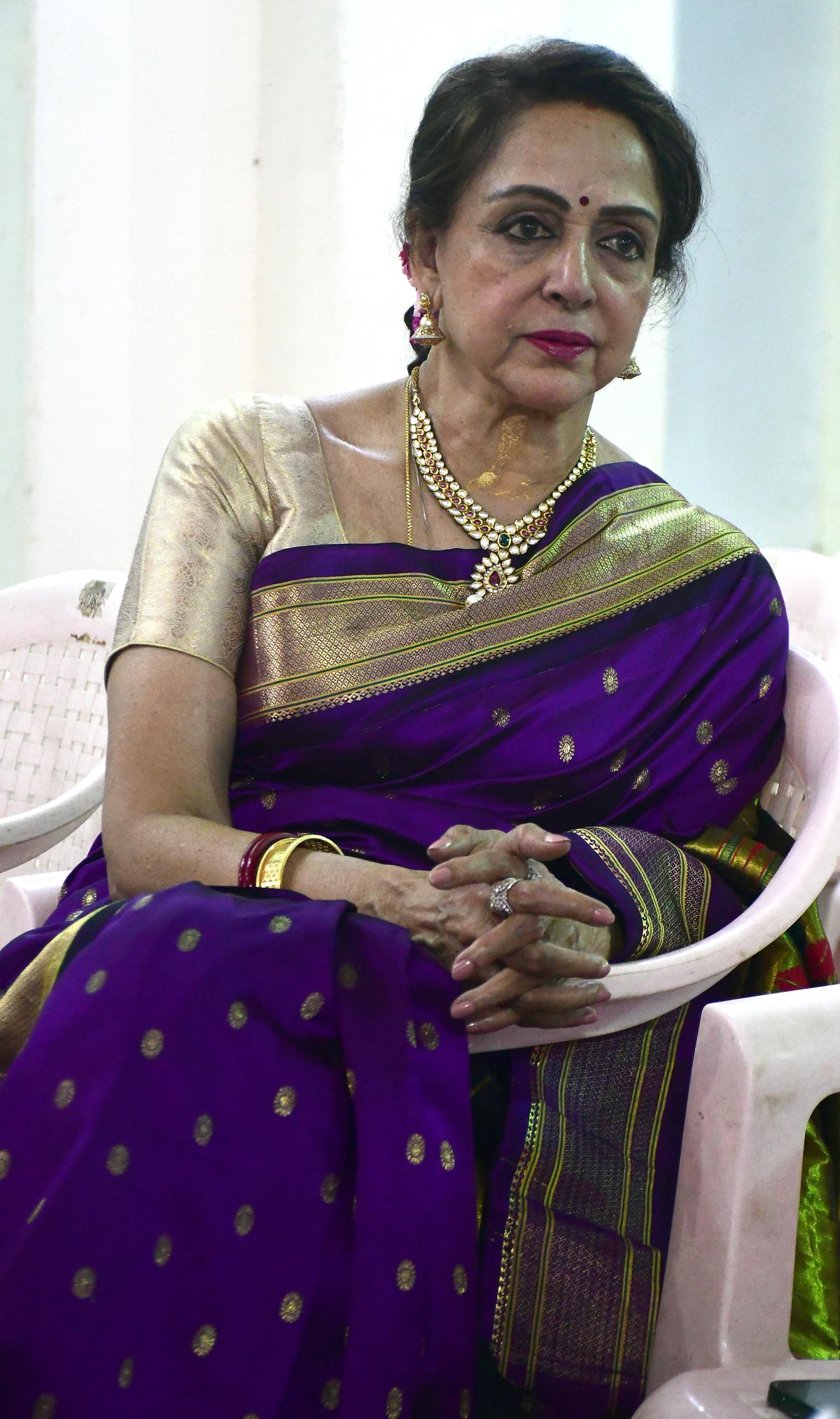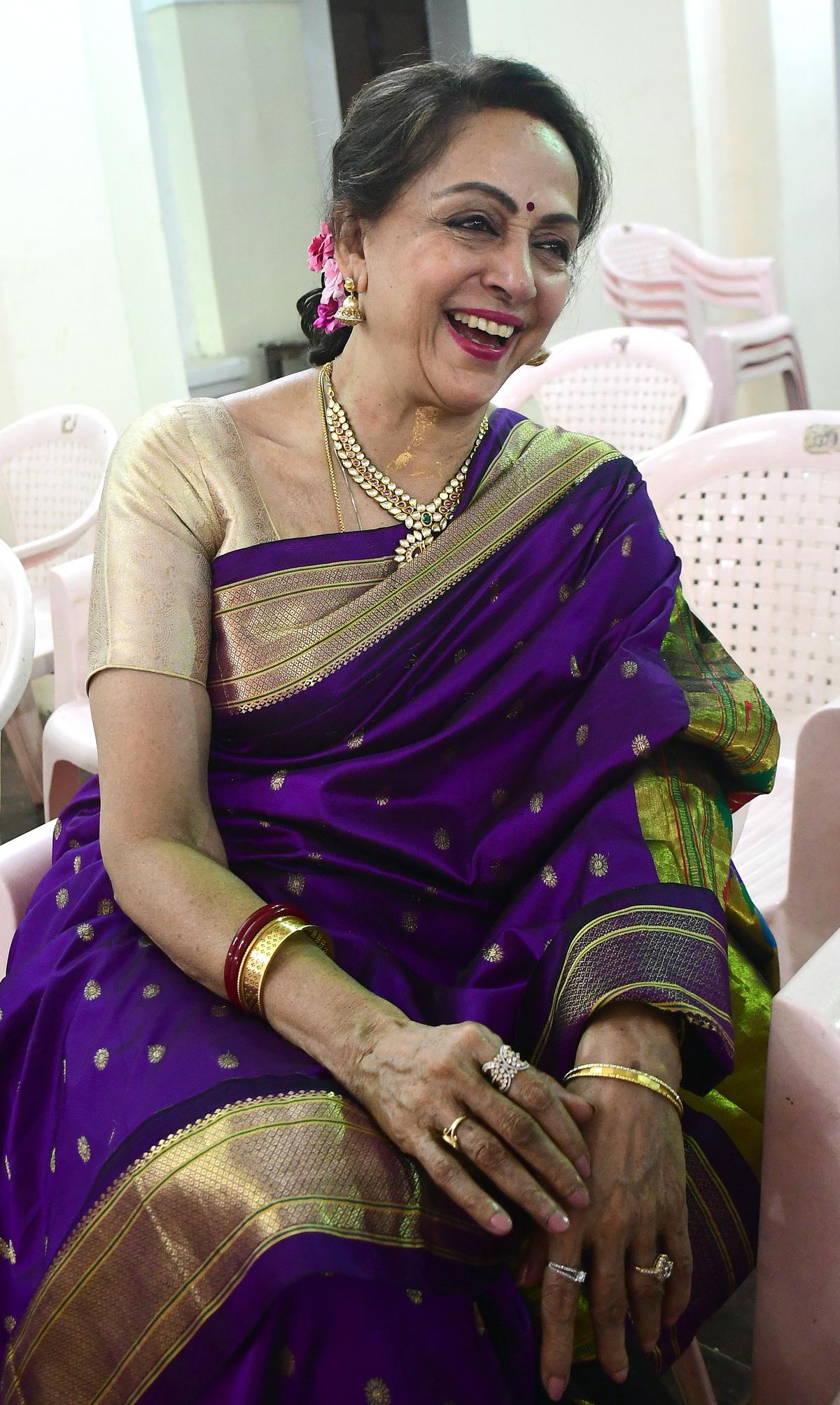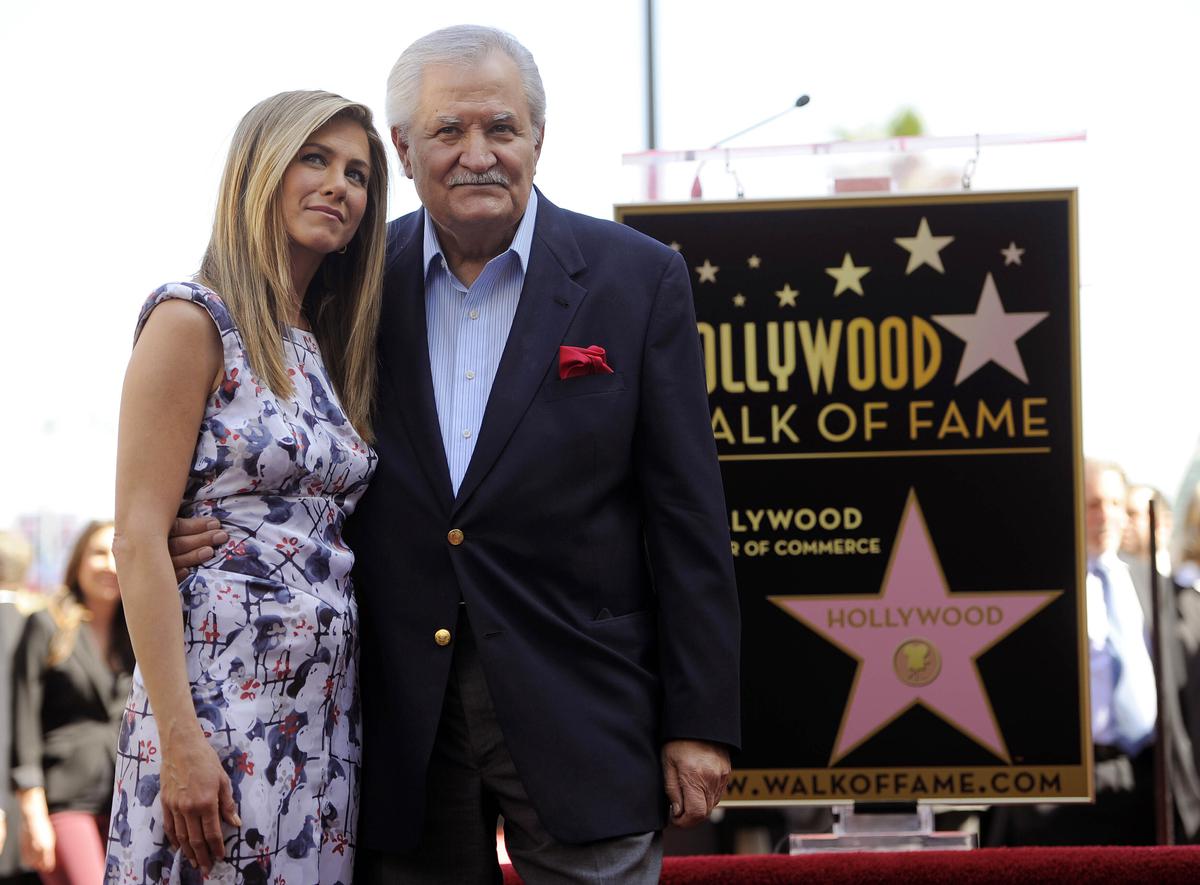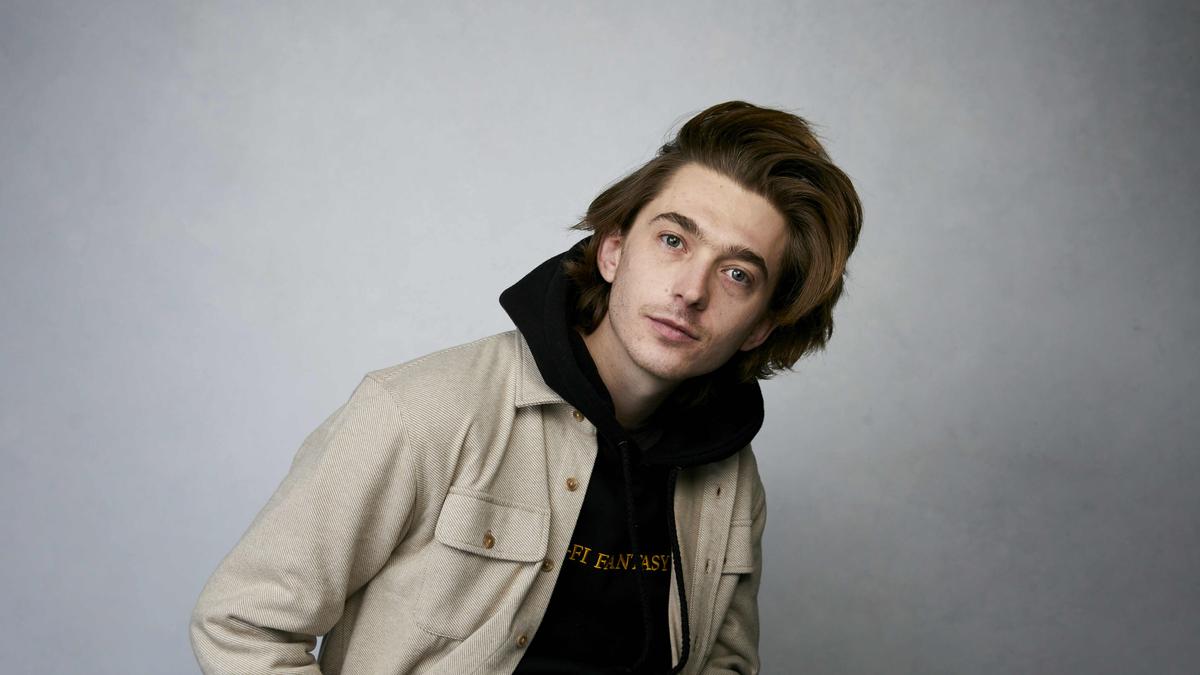Hema Malini, Kittappa Pillai’s star disciple, recalls what made him one of the most sought-after gurus
Hema Malini, Kittappa Pillai’s star disciple, recalls what made him one of the most sought-after gurus
As tourists troop out of the Thanjavur palace complex in the evening, and an unseen koel pipes up in the trees, cars draw up to the Sangeetha Mahal, bearing young passengers dressed in traditional Bharatanatyam costume.
They disembark in a fragrant cloud, the rustle of their silks mingling with the tinkle of salangai, and pay obeisance to their gurus before proceeding backstage.
The hall is getting ready for the 16th homage programme to nattuvanar K.P. Kittappa Pillai (1913-1999), scion of the Thanjavur Quartet (Chinnaiah, Ponnaiah, Sivanandam and Vadivelu), and an acknowledged maestro of Bharatanatyam’s codified grammar.
Organised every year by Kittappa Natyalaya, run by the virtuoso’s youngest son K.P.K. Chandrasekaran, the programme showcases the talent of the Thanjavur-based academy’s students, and is attended by notable senior disciples of the guru.
Tribute to guru
Hema Malini felicitating a young dance student. Also seen are Prince Babaji Rajah Bhonsle and Gayathri Krishnan, Collector of Tiruvarur District
| Photo Credit: M. Srinath
This year’s guest of honour was actor and politician Hema Malini, 74, who was Kittappa’s student in the 1960s and ’70s. With her arrival, keepsake photograph-hunters gather around, as some dance students rush to touch her feet. But the ‘dream girl’ politely keeps them at bay, her demeanour acknowledging that the evening’s leading star is her late teacher.
“Guruji was a very sweet and friendly person, even though I used to be scared of him at first,” she says, settling into a plastic chair in the back row. “He came into my life when I was 16, and had just started acting in Hindi films. I saw him on stage doing the nattuvangam for Vyjayanthimalaji in a dance programme in Madras, and was so impressed that I wanted to learn only from him.”
Having learned dance from the age of six and becoming a performer at age eight, Hema Malini’s interest in learning Bharatanatyam from one of its most meritorious teachers was driven by a desire to excel in the art form.
“My guru from Delhi was Sikkal Ramaswami Pillai. I also learnt from Indira from Kalakshetra. Though there were other exponents in Madras, I was very keen to learn from the same guru who had tutored Vyjayanthimala. So my father arranged a meeting and guruji started teaching me.”

Hema Malini recalls her long association with Kittappa Pillai
| Photo Credit: M. Srinath
Recalling Kittappa’s orchestration skills, she says the simplest of his jathis would look spectacular when presented on stage. “I learned beautiful and rare pieces, like ‘Navasandhi’, ‘Suladi’, and many varnams. I may not remember some of them today, but I’m sure if I see guruji, it will all come back to me, and I will start dancing,” she says with smile.
Kittappa Pillai began training Hema Malini in Bharatanatyam just as her career as Bollywood’s sweetheart was taking off after her debut in the 1968 film Sapnon ka Saudagar opposite Raj Kapoor. “I was born in Ammankudi near Tiruchi, and was taken to Delhi as a three-month-old. From there, my family shifted to Madras, and then when I started acting in Hindi films, to Bombay. Guruji came to Bombay regularly to teach me.”
Juggling dance and films
Their association lasted for a decade, when Hema Malini ruled the screens with multiple outings as the feisty heroine in films like Johnny Mera Naam, Seeta Aur Geeta and Sholay.
It was difficult to balance both films and dance practice, she admits. “I would be overwhelmed, because I’d shoot till afternoon for films, and then give a dance performance in the evening. But I continued learning from guruji, so much so that when I had no time to rehearse at home, I would take him along on outdoor shoots,” she says.
This was also the time when she was learning Kuchipudi from Vempati Chinna Satyam and Mohiniattam from Natanam Gopalakrishnan.
“At one time, I would do all three dance styles in one programme, and all the three gurus would be on stage,” she recalls.
Unique style
“Kittappa Pillai’s sollukattu (vocal percussion) rendition was so fast that mridangam players would struggle to keep pace,” says Hema Malini. “But it would still be the most comfortable rhythm for the artiste. This was his special ability.”
And he wasn’t above making allowances for her affection for film star Dharmendra, who would eventually marry her. “When our romance was developing, guruji was there, watching,” she says, blushingly. “He never played Cupid, but if I asked to be let off a bit early from dance practice so that I could meet Dharamji, he would agree.” The macho hero and the dance master were thick friends, she adds.
“I would always see them, trying to talk, mostly with gestures, because Dharamji didn’t know Tamil, and Guruji never learned Hindi,” she laughs.
Despite the extensive training, Hema Malini never got to show much of her Bharatanatyam skills in films. “Dances in movies and of the classical stream are two different art forms. One is a mixture of styles, the other is formal and has rigid rules. Unlike Vyjayanthimala, I was unable to use my Bharatanatyam skills in songs, because films had changed over the years. By the time I got my big break, heroines were required to portray the strong modern woman,” she says.
As a classical dancer, she never agrees to do a ‘film dance’ on the stage. “I have opted for dance ballets that give greater scope to add stories from the epics and blend different styles of dancing, to appeal to the public.”
Hema Malini tried learning a varnam online from Chandrasekaran, during lockdown. “It was easy to pick up, but to practice and see the final result, one has to dance in front of the guru. I’m happy to see young dancers all over India taking forward the legacy of Bharatanatyam gurus,” she says.
As the evening’s programme begins, Hema Malini devotes her attention to the performances, honest tributes to her revered guru.
In his footsteps
The annual dance homage to K.P. Kittappa Pillai is the best way to commemorate the nattuvangam maestro’s legacy, says his son and programme organiser K.P.K. Chandrasekaran, who represents the eighth generation of the family.
Born into the famed ‘Thanjavur Quartet’ clan in 1913, Kittappa Pillai was an accomplished singer, composer and of course, nattuvanar.
“One may be surprised to hear that appa came late to Bharatanatyam. After training under his maternal grandfather Meenakshi Sundaram Pillai, and then under his father Ponniah Pillai, he was a vocal artiste with his cousin Narayanasamy, son of Pichhai Nattuvanar,” says Chandrasekaran.
When Narayanasamy passed away, Kittappa, then in his 30s, was requested by Padmanabha Iyer in Bengaluru, to do nattuvangam for his daughter Padmalochini Nagarajan. “She was appa’s first disciple.”
Tutoring Padmalochini meant a shift to Bengaluru from Thanjavur, where Kittappa resided with his family in a heritage home gifted by Thulaji Bhonsle II. Chandrasekaran continues to live here.
“Appa’s maternal uncle Pandanallur Muthiah Pillai, his son Gopalakrishnan and my father rented a house in Shankarapuram, Bengaluru, and would visit students’ homes for lessons. Appa spent 35 years in Bengaluru, and from that’s where his circle of students grew to places like Chennai and Mumbai,” he says.
Kittappa’s Bharatanatyam students span generations, and come from all walks of life. “Besides actors like Vyjayanthimala and Hema Malini, he has taught Sudharani Raghupathy, Narthaki Nataraj and Malathi Dominic. Some would come just to learn one varnam. His expertise in vocal rendition helped him to develop music suited for the dance stage.” Kittappa popularised rare works like ‘Sarabhendra Bhoopala Kuravanji’, ‘Navasanthi Kavuthuvam’, ‘Suladi’ and ‘Prabhandam’. “He was an intuitive teacher. Each lesson would vary according to the student’s capability.”
Chandrasekaran, the youngest of the maestro’s eight children, works as a dance teacher at a government school in Tiruvarur, and has kept the legacy alive through the Kittappa Natyalaya in Thanjavur.
Kittappa’s granddaughters Charumathi, Jayashree and Subhashree are learning Bharatanatyam, while grandson Sabapathy has taken up mridangam and nattuvangam training. His great grandson Kavish Dinesh is learning violin. “We have to work to pass this knowledge on. Appa was active till his last living day. He died at the age of 87 in 1999,” says Chandrasekaran.







